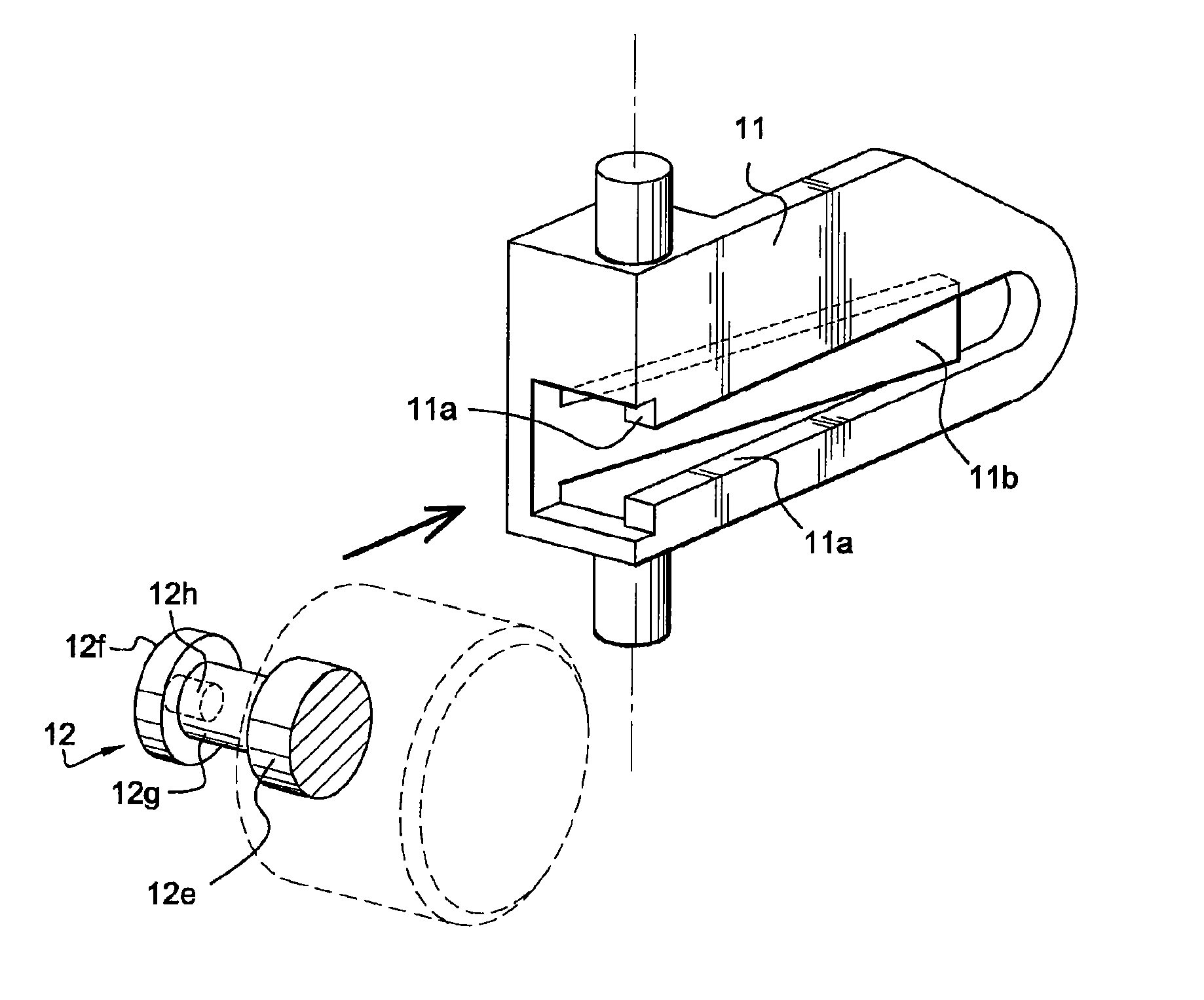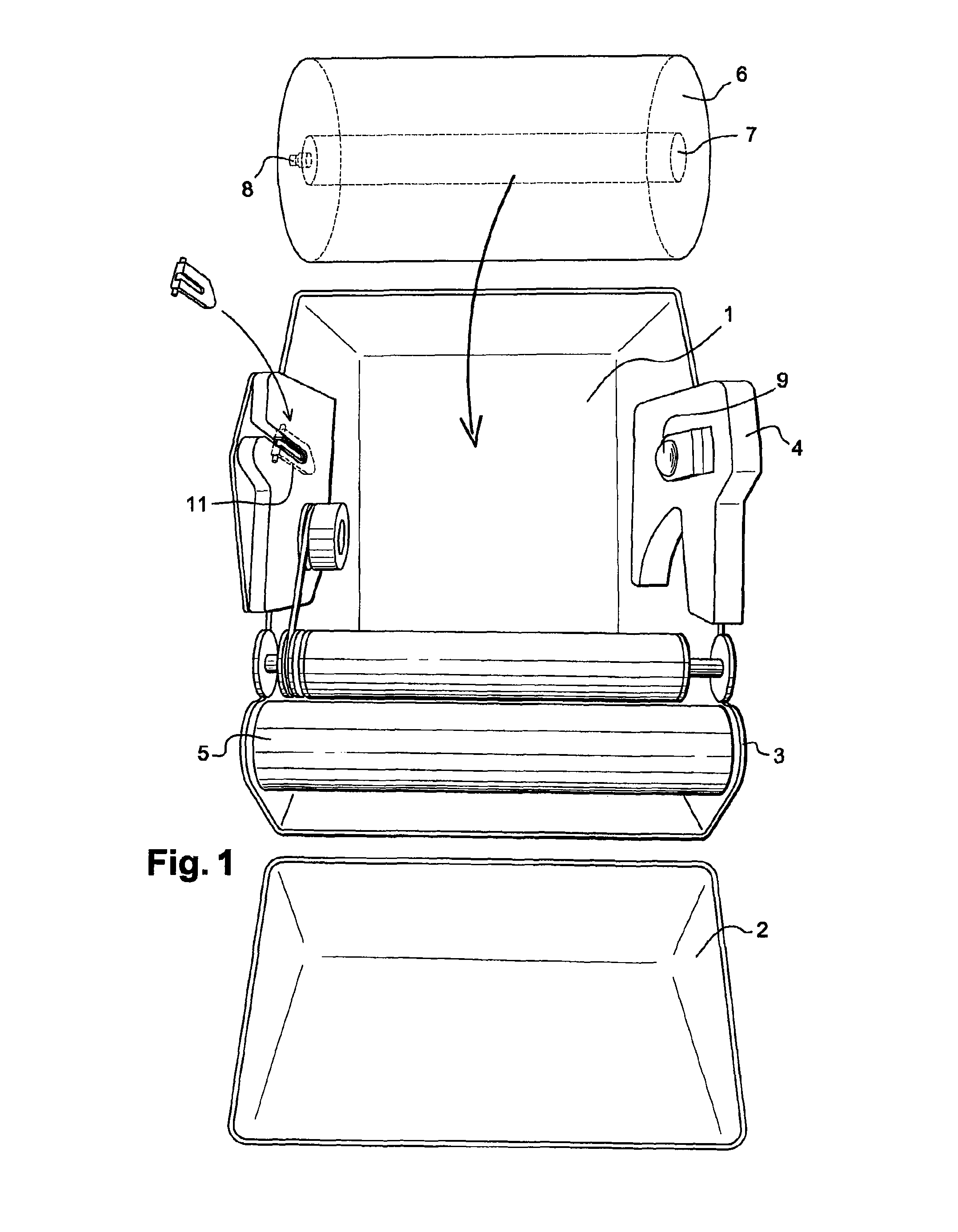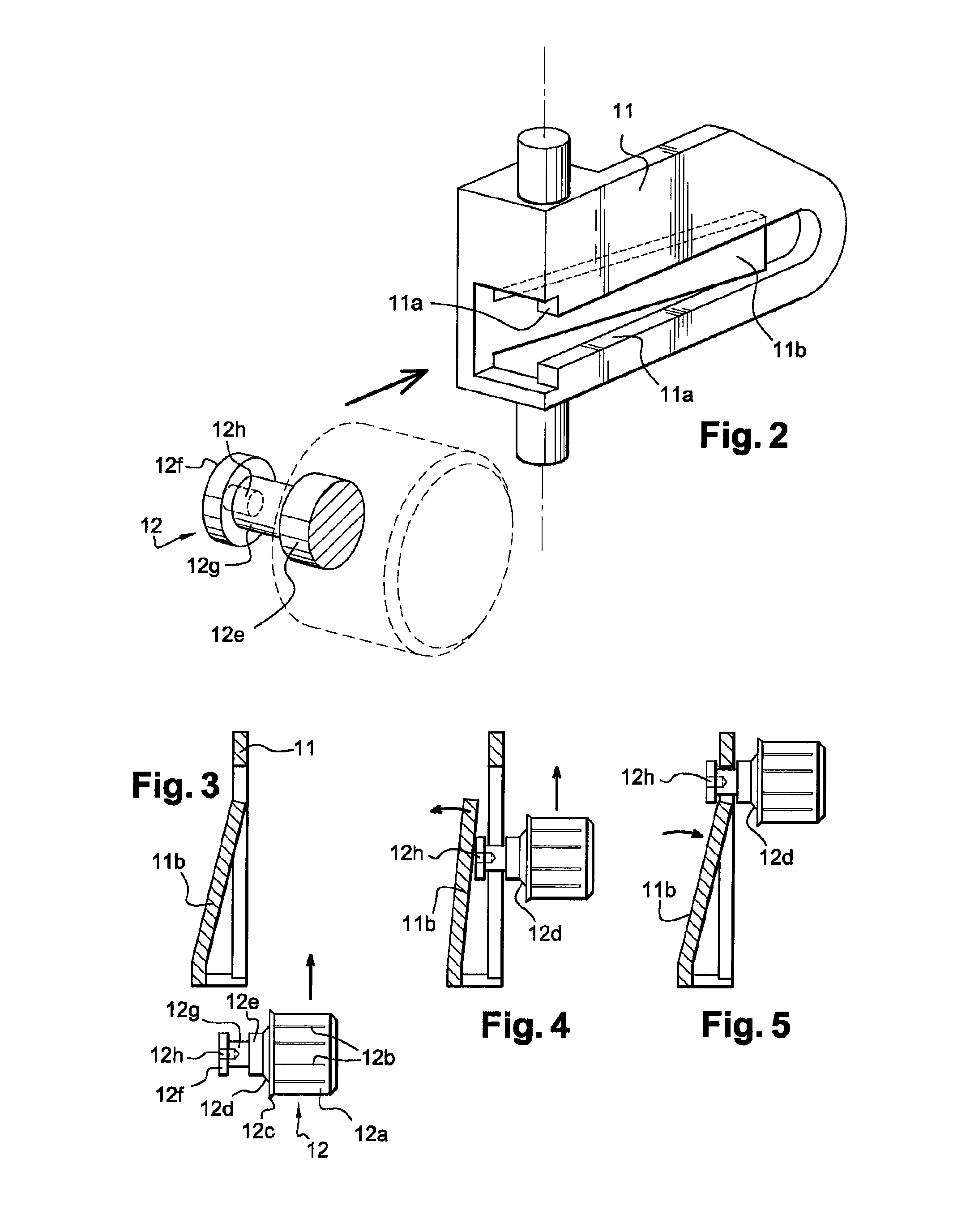Disposable end piece for a roll of wiping material and apparatus for dispensing wiping material using one such end piece
- Summary
- Abstract
- Description
- Claims
- Application Information
AI Technical Summary
Benefits of technology
Problems solved by technology
Method used
Image
Examples
Embodiment Construction
[0030]In order that the object of the invention may more readily be understood, the following description is given, merely by way of example, reference being made to the accompanying drawings.
[0031]In FIGS. 6, 8 and 9, end piece (12) has a cylindrical bearing surface (12a) with splines (12b) and a transverse flange (12c) which fits tightly into the core. This area of the end piece which is intended to be located inside the core can be differently designed, the arrangement in the Figures merely being shown by way of example.
[0032]The front part of the end piece, i.e. that located outside the core, has beyond the transverse flange, an axial neck comprising a tapered bearing surface (12d) that extends as a cylindrical bearing surface (12e), a head (12f) at its end and, between these two, a hollowed-out section forming a groove (12g) to constitute a guide path. The presence or absence of the tapered part (12d) depends on the configuration of the end piece.
[0033]According to the inventio...
PUM
 Login to View More
Login to View More Abstract
Description
Claims
Application Information
 Login to View More
Login to View More - R&D
- Intellectual Property
- Life Sciences
- Materials
- Tech Scout
- Unparalleled Data Quality
- Higher Quality Content
- 60% Fewer Hallucinations
Browse by: Latest US Patents, China's latest patents, Technical Efficacy Thesaurus, Application Domain, Technology Topic, Popular Technical Reports.
© 2025 PatSnap. All rights reserved.Legal|Privacy policy|Modern Slavery Act Transparency Statement|Sitemap|About US| Contact US: help@patsnap.com



